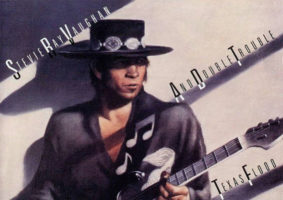
Hear Stevie Ray Vaughan's Isolated Guitar from "Rude Mood"
Here’s a treat. It’s the late Stevie Ray Vaughan’s isolated guitar track from “Rude Mood.” This is pretty unusual, since YouTube is considerably light on isolated SRV recordings.
Along with “Testify” and “Lenny,” “Rude Mood” is another of the three instrumental tracks recorded for SRV’s debut release, 1983’s Texas Flood.
Written by Vaughan and inspired by the Lightning Hopkins song “Hopkin’s Sky Hop,” this barn-burning track serves as a tour de force display of Stevie’s mastery of a great many different guitar techniques, including fast alternate picking, complex sections devised of fingers-plus-pick hybrid-picking techniques, and seamless transitions from hard-driving rhythm playing to blazing single-note solos.
As a composition, it is perfectly constructed into distinct and individual 12-bar choruses, each of which brings the intensity of the song to a new and higher level. Says Double Trouble drummer Chris Layton, “In early ’79, [country DJ] Joe Gracey made early recordings of Double Trouble while Lou Ann [Barton], Jack Newhouse and Johnny Reno were still in the band.
That was blues stuff like, ‘Ti Na Nee Na Nu,’ ‘Scratch My Back’ and ‘Sugarcoated Love,’ along with an early version of ‘Rude Mood.’ Those recordings were done in the tiny basement of KOKE, a country station. Gracey recorded us on a four-channel mixer with a reel-to-reel, with everything done totally live using just four microphones.”
It’s fascinating to hear the recording of “Rude Mood” from that period, because the Texas Flood version, which is much faster, is a note-perfect recreation of it. There is virtually no improvisation whatsoever. It is almost unheard of for a blues guitar player to compose something that lengthy and complicated, and perform it note-perfectly for years and years, just as Stevie did. He displays incredible attention to detail on this song, and this is even more obvious when you compare the two studio versions, recorded four years apart.
Source: www.guitarworld.com









